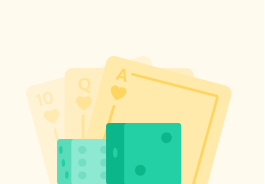YOU ARE LEARNING:
Experimental Probability and Relative Frequency

Experimental Probability and Relative Frequency
Running experiments allows us to find out if events are biased, and get a better understanding of their true probability.
We have worked with theoretical probability in previous lessons, and have been assuming all chances are fair. However, sometimes events can be biased and therefore we can not predict the probability without first running an experiment.
Lets have a look at an example.
If I rolled a standard and fair 6-sided die, what is the probability of landing on an even number?

How about if I said the 6-sided die was biased?
It's impossible to say straight away as our theory is based on a fair die.
We can use an experiment to work this out!
An experiment could be rolling the dice 10 times and recording how many times it lands on a 2, 4 or 6.
Let's try this out.
I roll the dice 10 times, and it lands on 2, 4 or 6 108 times.
What is the probability of landing on a 2, 4 or 6?

Awesome!
The answer is 80% or 54for the biased dice.
We have just worked out the experimental probability of an event occurring.
As we increase the number of trials in an experiment, we can be more certain of our experimental probabilities. In general, the larger the amount of trials, or sample size, the more reliable the probabilities.
Grace and Jack play 30 badminton matches. Grace wins 21 times and Jack wins the rest of the matches. Estimate the probability of Grace winning against Jack.
Express Grace's wins as a fraction

P(Grace wins) = 3021. Simplify this fraction

Sweet! 💪
The experimental probability of Grace winning is 107
On another day, they play 50 matches
We can now use our experimental probability to estimate how many matches Grace will win.
How many could you expect Grace to win?

I spin a biased spinner 40 times. It lands on blue 11 times. Estimate the probability of landing on blue.

